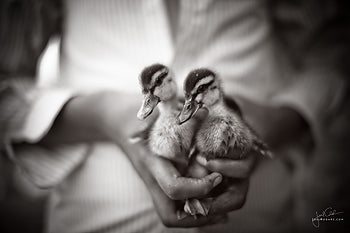In college, I received my worst grade in a "Composition of Photography" class. The course included shooting a roll of color slide film every week and then going to a one and a half hour class in the afternoon (in the dark) and looking at everyone’s images. It was difficult not to sleep through it, as my images were just as boring as everyone else’s. Perhaps one of the difficulties in taking interesting photographs as beginners was the limit put on us: only 35 mm format and only a fixed 50 mm lens. (Fixed focal length lenses are also referred to as "prime lenses.")
The 50 mm lens is the focal length that renders the image as close to what the human eye sees, not in terms of angle of view, but in terms of compression of an image. (Remember that a wide-angle lens distorts the image on a 35 mm equivalent and that a "long" lens like a 200 mm lens compresses the image, making foreground, middle ground, and background seem closer together, front to back.) The difficulty with a standard, fixed 50 mm lens is that the photographer does not get any added "interest" from the lens itself. The photographer can’t crop too easily with a long zoom lens or easily back out for a spectacularly wide-angle landscape shot. The 50 mm fixed lens forces the photographer to think about content and composition. It is the most difficult lens in this regard.
Never fear, the lens has a long history of working for great photographers like you. Henri Cartier-Bresson tramped all over Europe, Africa, the United States, and Mexico with his 50 mm lens on his Leica (a film camera then, and probably not as expensive as today's M9). He was initially trained in painting and seemed to be obsessed with geometry both in his painting and then in his photography. He said that he often found a geometrically interesting composition in the urban environment and then waited for the human element to filter through. This way, he concentrated on fundamentals of line and design and was not distracted by a bag full of lenses, distracted by deciding which lens to use when he needed to be concentrating on making the image. Check out some his images on Magnum's website.
Am I suggesting selling your beautiful 600 mm fixed or your 10-24 mm zoom? Nope. But I am suggesting that you challenge yourself for an outing, for a series, or even for a trip. Try any of the 50 mm lens that Nikon or Canon offers, or your fixed lens for your medium/large format. Think more about content, what the image is trying to say, what the light is doing, and especially what you are trying to say. Good luck…we’ll review the different variations of the 50 mm lens soon.
Bottom Line: Sometimes photographers (myself included) rely too much on lenses’ effects to make their photography interesting and forget about finding interesting content and light. The 50 mm fixed lenses are usually cheap (except for the fastest varieties--the ones with the widest apertures), sharp, and force you to think about other fundamentals. Don't forget that you can also rent the Canon 50 mm f/1.2 for the day and try it out...you'll get the cost of one day's rental off when you buy the lens.
OTHER ARTICLES ON PHOTOGRAPHY TIPS
Timeless Principles in Black and White Photography
Seven Steps to Landscape Photography: Approaching an Outdoor Scene




